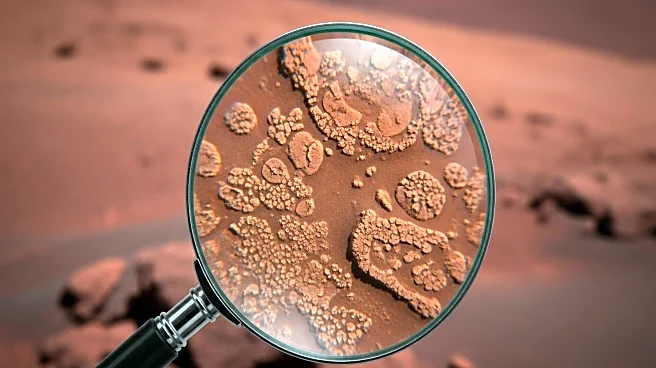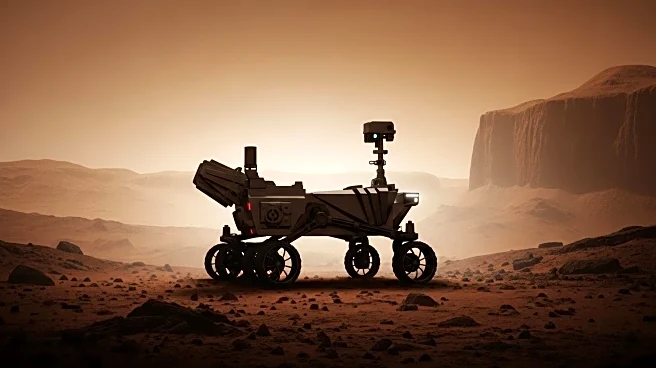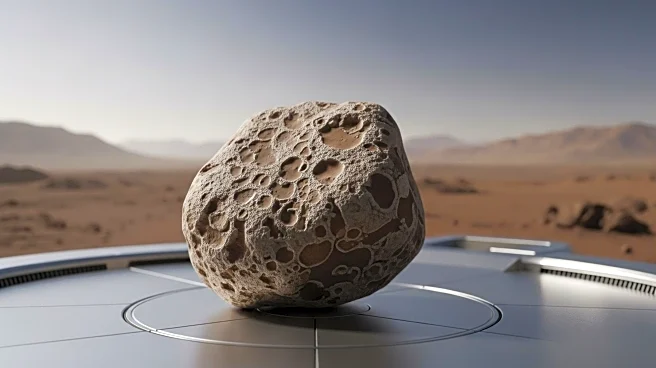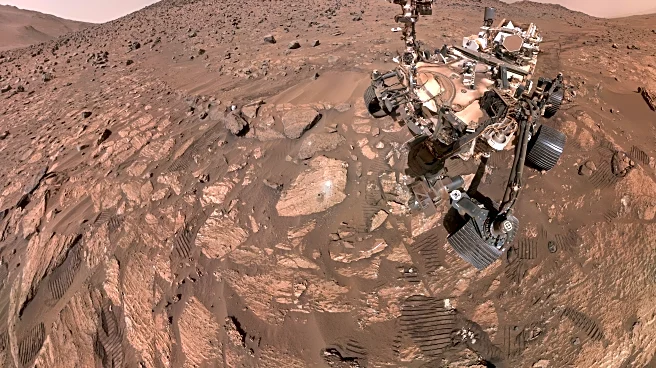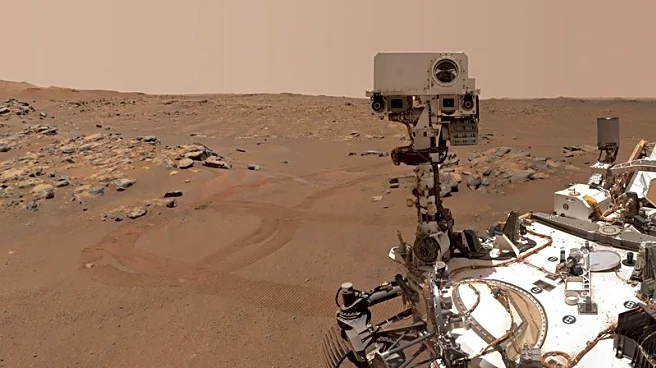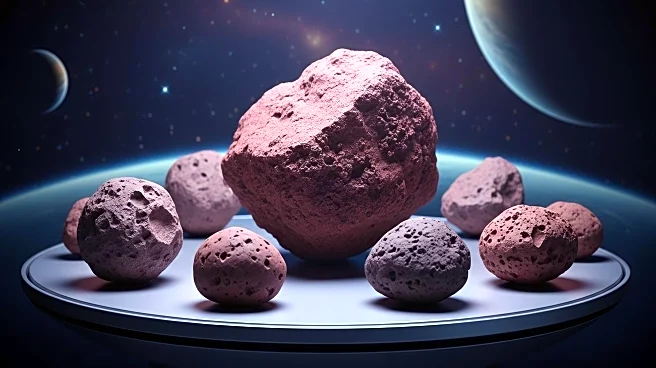What's Happening?
NASA has announced that a Martian rock sample collected by the Perseverance rover may contain the clearest signs yet of ancient life on Mars. The sample, named Sapphire Canyon, was drilled from a rock called Cheyava Falls in the Neretva Vallis river valley, a region shaped by water that once flowed into Jezero Crater. Scientists have published a peer-reviewed paper in Nature, suggesting that the leopard spots on the rock could be biosignatures, though further study is needed. The discovery is a result of extensive research and collaboration among over 1,000 scientists and engineers at NASA's Jet Propulsion Laboratory and partner institutions.
Why It's Important?
This potential discovery of ancient life on Mars is significant as it brings scientists closer to answering the profound question of whether life exists beyond Earth. The presence of organic compounds and features consistent with biological processes in the rock sample could indicate that microbial life once existed on Mars. Understanding the conditions that may have supported life on Mars can provide insights into the planet's history and its potential habitability. The findings also highlight the importance of continued exploration and research in planetary science.
What's Next?
NASA plans to conduct further research to confirm the biological origin of the features found in the rock sample. The agency is also considering ways to return the samples to Earth for more detailed analysis. However, budget constraints proposed by the White House may impact the timeline and feasibility of sample return missions. Scientists hope to use more sensitive instruments on Earth to analyze the samples and definitively determine the presence of life on Mars.
